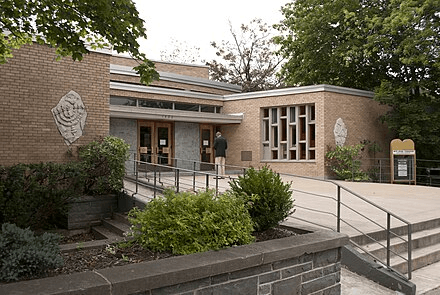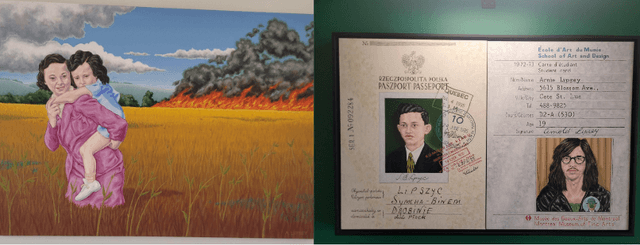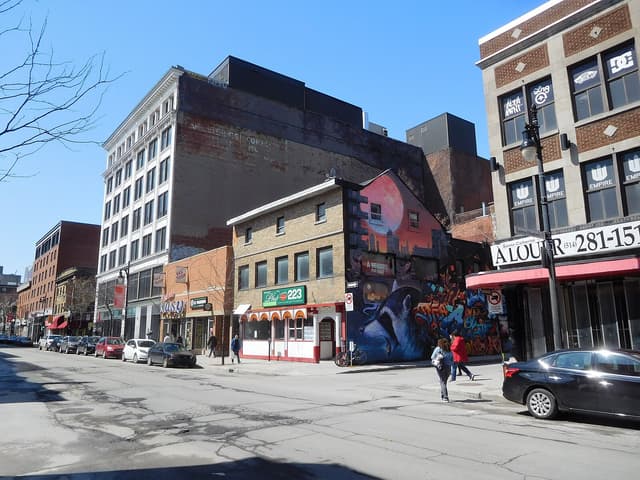On one of my morning strolls around Montreal’s Plateau neighbourhood, I noticed an engraved plaque atop a large and stately stone facade commemorating the Mortimer B. Davis Young Men’s Hebrew Association Memorial Building. Although now home to luxury private condos, the building once housed an elaborate athletic facility including a pool; gymnasiums for basketball, racket ball, handball; as well as a 500-person movie theatre, a banquet hall, and classrooms.
Due to the large concentration of Jewish immigrant families in many Montreal neighborhoods, Jewish institutions were often established in close proximity, hoping to boost membership. Located at the border of Jeanne-Mance Park, the building was in the heart of the Plateau which was at the time the heartbeat of the large and growing community of Ashkenazi Jews in Montreal.
The YMHA attracted both Jewish and non-Jewish sport enthusiasts alike, aiming to “provide a Jewish communal, social, educational and recreational centre for Jews of all economic classes and of all religious views,” according to former YMHA president Louis Rubenstein. To cement Rubenstein’s legacy as a prominent Jewish sportsman entrepreneur, there is a granite memorial to him located just across from the former YMHA, at the intersection of Parc and Mont-Royal Avenues. Thanks to the success of the Mont-Royal YMHA and the demand for such Jewish spaces, various other YMHA locations in Snowdon, Chomedey, and Côte Saint-Luc were established in successive years as Jewish immigrant families established residence in surrounding neighborhoods.
In order to appreciate the impact the Mont-Royal YMHA had on its community, it’s important to understand the life of the Jewish Montrealer for whom it was named. Mortimer B. Davis was born in 1886 to a Jewish immigrant family. Davis became the president of the American Tobacco Company of Canada, establishing a near monopoly on the rapidly growing industry. In 1903, Davis’s company was estimated to control 80 per cent of Canada's cigarette market. Ironically, later in life, Davis took interest in public health and supported a number of Jewish-Canadian community organizations.
Following Davis’ illustrious career in the tobacco industry, he became well known by the Montreal Jewish community particularly for his philanthropic propensity. It was, of course, his donation that allowed for the construction and maintenance of the Mont-Royal YMHA, which cemented his name on the building for decades to come. Davis also spearheaded fundraising campaigns for survivors of WWII and donated money to help refugees, mental health institutions, and Jewish community aid institutions.
After years of dormancy and disrepair following its 1963 sale to the University of Montreal, in 2006, the Mont-Royal YMHA was sold again, this time to be made into luxury condos. Only private developers with significant funding and experience were willing to take on the task of restoration and refurbishment. The local community expressed concern with turning the publicly owned building into private property that would attract wealthy tenants from outside the area. The transformation of the Mont-Royal YMHA into luxury housing only accessible to a newer, younger generation of Montrealers seemed antithetical to its origins as a place for people of all income brackets and backgrounds. Many community members who had initially expressed concern over the sale said they would assent to the building’s renovation as long as the public gained access to the YMHA’s swimming pool, which was denied.
Although the renovation plans were approved and fully implemented, the heritage status of the building offered significant protection against major exterior changes, and the impressive facade remained largely untouched.
All those who are interested in Montreal’s architectural and Jewish history should give this site a visit! The Mortimer B. Davis YMHA is located at 265 Mont-Royal Avenue West—and don’t forget to look up at the original engraving.
Powered by Froala Editor






